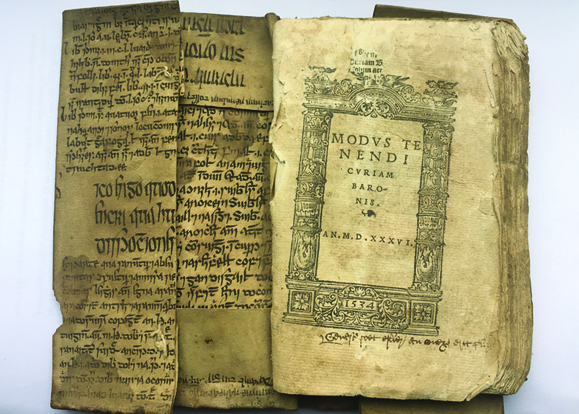Arecently discovered 15th-century Irish vellum manuscript reveals a connection between Gaelic Ireland and the Islamic world, and illustrates that medical scholarship in medieval Gaelic Ireland was on a par with that practiced on the continent.
The discovery – a sheet full of text in Irish – cut from a 15th-century Irish vellum manuscript that had been trimmed and folded and stitched to the spine of a pocket-sized Latin manual printed in London in 1534-1536, was made by Prof. Padraig Ó Macháin of University College Cork.
The identity of the text as a fragment of a translation into Irish of the Canon of Medicine by the Persian physician Ibn Sena (980–1037), also known as Avicenna, was established by Ó Macháin’s collaborator of many years, Prof. Aoibheann Nic Dhonnchadha of the Dublin Institute for Advanced Studies, an expert on medieval Irish medicine.
Ibn Sena was considered one of the most significant physicians in the Islamic Golden Age, and his Canon of Medicine was a great medical encyclopedia which, through translation into Latin (from which the Irish text itself is translated), achieved great popularity in Europe. The Irish fragment, which contains parts of the opening chapters on the physiology of the jaws, the nose, and the back, is further evidence of Irish scholars traveling to Europe and bringing their learning back to the medical schools of Ireland.
Because of the importance of the manuscript fragment to the history of Irish learning and medicine, the owners, a family in Cornwall, agreed that the binding should be removed from the book by John Gillis of TCD, opened, and digitized under the supervision of Prof. Ó Macháin, to whom they entrusted the book, with a new binding provided. This was completed and “The Avicenna Fragment” is now available for viewing on the Irish Script on Screen website. A public seminar on aspects of Gaelic medieval medicine was hosted by UCC on March 7. ♦
Ancient Gaelic Manuscript Discovered


Leave a Reply